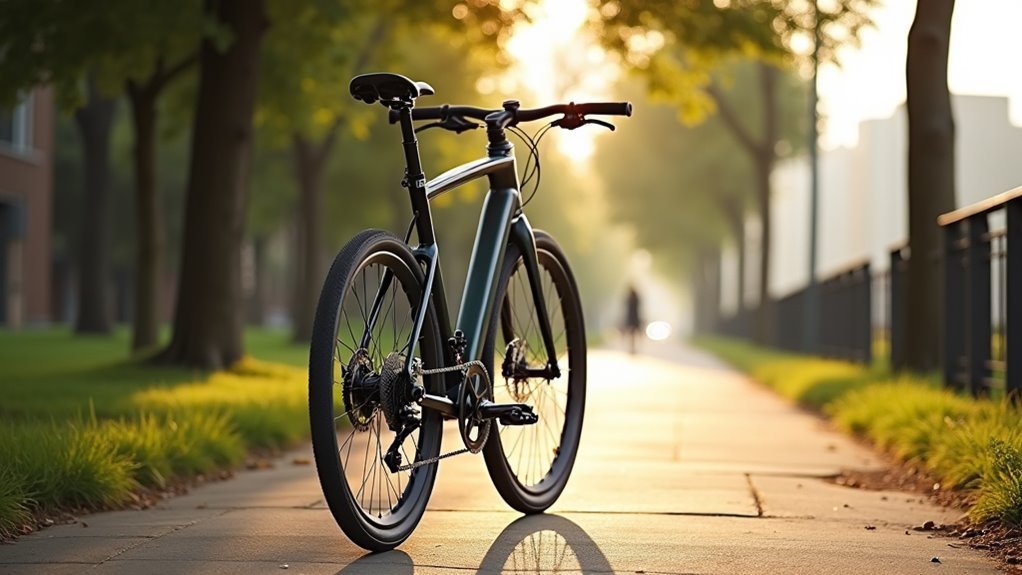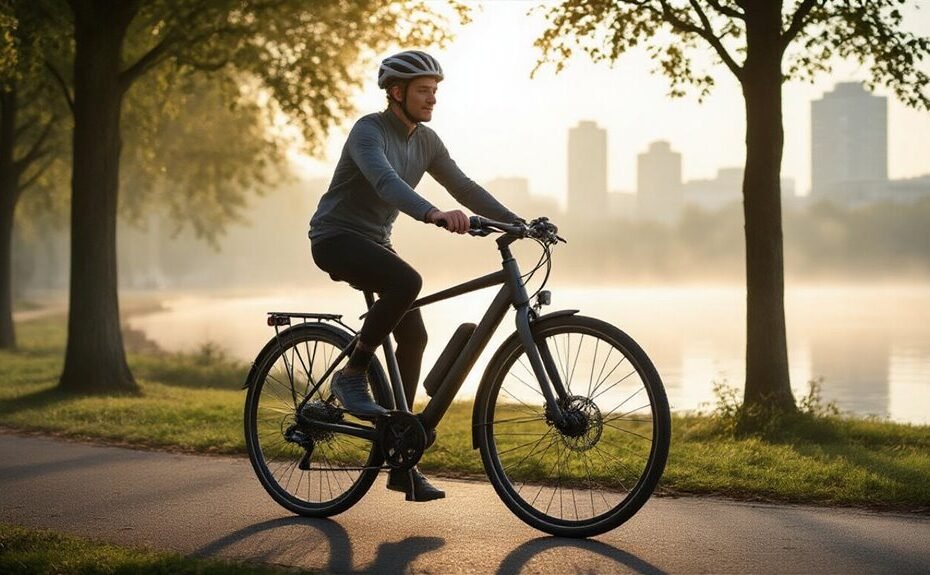Quiet drive bikes have been gaining traction among serious cyclists and casual riders alike. They’re not just a passing trend. The belt-driven systems offer a nearly silent experience compared to traditional chain mechanisms, which makes a noticeable difference during early morning rides or indoor training sessions. Most people don’t realize how much noise their bike actually produces until they switch to a quiet drive. The initial investment might seem steep, but what about the long-term benefits that extend beyond mere silence?
Some of the links in this article may be affiliate links. If you make a purchase through these links, we may earn a small commission at no extra cost to you. Thank you.
The Science Behind Quiet Belt Drive Technology
While traditional bike chains have dominated the cycling world for decades, the emergence of quiet belt drive technology represents a revolutionary shift in how bicycles transfer power from rider to wheel.
At its core, this innovation utilizes carbon fiber-reinforced polyurethane belts that deliver an efficient power transfer without the metal-on-metal friction that plagues chain systems.
The remarkable durability and corrosion-resistant properties of belt drives contribute to their extended lifespan, making them surprisingly cost-effective despite higher initial costs.
Their low maintenance requirements—no lubrication needed!—combined with a smooth, near-silent ride experience, are expanding compatibility across various bike types, including electric mountain bikes.
Noise Reduction Benefits for Home Workouts
As apartment living becomes increasingly common in urban environments, the need for exercise equipment that doesn’t disturb the peace has never been more pressing.
Quiet drive bikes offer exceptional noise reduction benefits for those in shared living spaces, allowing users to engage in home workouts without creating distractions for others.
The smooth ride and quiet operation of these bikes eliminate the typical noises associated with indoor cycling, creating an enhanced exercise experience.
Users can focus better during workouts, potentially improving their mental well-being.
With a quiet drive bike, early morning or late-night sessions become possible without worrying about disturbing housemates or neighbors.
Durability and Maintenance Advantages of Belt Systems

Belt drive systems revolutionize the indoor cycling experience with exceptional durability that far surpasses traditional chain mechanisms. Crafted from carbon fiber-reinforced polyurethane, these systems offer remarkable longevity—often exceeding 20,000 miles before replacement becomes necessary.
What makes belt drive systems truly worth the investment:
- Minimal maintenance – No lubrication needed, resulting in cleaner performance.
- Superior durability – Exceptional resistance to wear and tear, corrosion, and grime.
- Long-term cost savings – Despite higher initial costs, their quiet performance and reduced need for repairs provide excellent value. Regular upkeep, including proper storage practices, can further enhance their longevity.
In challenging weather conditions, these systems maintain integrity while traditional chains deteriorate, making them a smart investment for serious cyclists.
Performance Comparison: Belt Drive Vs Chain Drive Mechanisms
When comparing performance aspects of drive mechanisms, the fundamental difference between belt and chain systems becomes immediately apparent in real-world riding conditions.
The belt drive offers a distinctly quiet ride that enhances the urban commuting experience, though it typically comes with a limited gear range compared to chain systems.
While the upfront cost of a belt drive electric bike is considerably higher, the long lifespan and reduced maintenance costs often justify this investment over time.
Chain drives provide versatility across varying terrains, but they can’t match the durability and clean operation that belt systems deliver—especially for riders who prioritize hassle-free performance over extensive gear options.
User Experience: What Fitness Enthusiasts Say About Quiet Drives

Fitness enthusiasts across the board have shared overwhelmingly positive feedback about their experiences with Quiet Drive bikes, moving beyond mere mechanical comparisons to focus on real-world performance benefits.
The immersive outdoor experience without distracting noise creates a deeper connection with nature during rides.
Three standout benefits according to users:
- Smooth acceleration and reduced vibrations enhance comfort during long rides.
- Minimal maintenance requirements let riders focus on fitness goals rather than bike upkeep.
- Efficient power transfer makes uphill climbs less strenuous.
Additionally, riders often report that using these bikes can be ideal for low-impact cardio, making them a great choice for those looking to reduce joint strain while maximizing workout efficiency.
The durability of these systems translates to long-term cost savings despite higher upfront investment, something serious fitness enthusiasts appreciate.
Frequently Asked Questions
What Is the Most Reliable Brand of Ebike?
Research indicates Trek, Specialized, and Bosch rank among the most reliable ebike brands, with Rad Power Bikes and Aventon offering quality at lower price points. E-bike reliability factors include warranty coverage and component quality.
Do Cops Really Care About E-Bikes?
Police enforcement of e-bike regulations varies by location. Officers typically focus on traffic laws, e-bike safety, and theft concerns rather than targeting riders specifically. Law enforcement responses balance rider rights with community perceptions and noise complaints.
What Are the Disadvantages of Mid Drive Ebikes?
Mid drive e-bikes suffer from higher maintenance costs, increased drivetrain wear, complex installation, heat generation issues, and potential torque limitations. Their motor placement affects ride comfort while requiring careful balance of mid drive efficiency and battery weight.
What Is the Average Lifespan of an Ebike?
E-bikes typically last 5-10 years, with batteries enduring 3-5 years or 500-1,000 charge cycles. Proper e-bike maintenance tips, like monitoring electrical systems and weight distribution effects, can greatly extend this lifespan.
